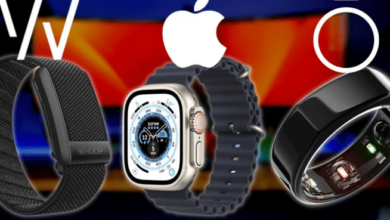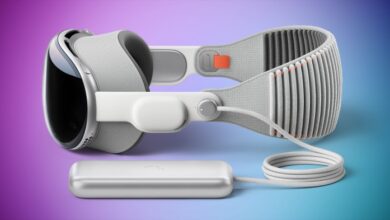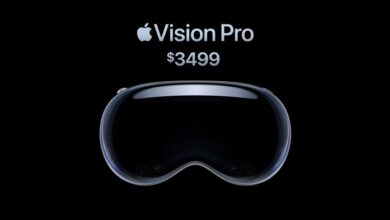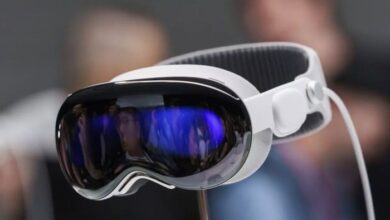
Will Smart Glasses Replace Smartphones?
Will smart glasses replace smartphones? This question has become increasingly relevant as technology advances and wearable devices become more sophisticated. While smartphones have dominated our lives for over a decade, the rise of smart glasses offers a tantalizing glimpse into a future where our interactions with technology could be even more seamless and immersive.
Smart glasses, with their hands-free capabilities and augmented reality features, hold the potential to revolutionize the way we communicate, access information, and interact with the world around us. But will they truly replace smartphones, or will they coexist as complementary devices, each serving a specific purpose?
This article delves into the potential advantages and challenges of this technological shift, exploring the future of smart glasses and their impact on our daily lives.
Current State of Smart Glasses
Smart glasses, devices that overlay digital information onto the wearer’s field of view, have been steadily evolving, offering a glimpse into a future where technology seamlessly integrates with our lives. While they haven’t yet achieved mainstream adoption, significant advancements have been made, paving the way for potential widespread use.
Current Functionalities and Limitations
Smart glasses are equipped with various functionalities, including:
- Augmented Reality (AR):Overlaying digital content onto the real world, enabling interactive experiences and information access. For instance, users can view directions, translate languages, or access product information in real-time.
- Voice Control:Hands-free operation through voice commands, allowing users to make calls, send messages, or control various functionalities without touching the device.
- Camera and Video Recording:Capturing photos and videos, offering potential applications in documentation, live streaming, and social media.
- Connectivity:Connecting to the internet and other devices, enabling communication, data access, and remote control capabilities.
- Health and Fitness Tracking:Monitoring vital signs, tracking physical activity, and providing health-related insights.
Despite their growing capabilities, smart glasses face limitations:
- Battery Life:Limited battery life remains a major concern, restricting usage time and hindering practical applications.
- Field of View:The display area is often limited, impacting the immersive experience and potential applications.
- Privacy Concerns:Concerns about data privacy and potential surveillance due to the presence of cameras and microphones raise ethical considerations.
- Social Acceptance:The bulky design and perceived “geekiness” can hinder social acceptance and limit widespread adoption.
- High Cost:Smart glasses are currently expensive, making them inaccessible to a broader market.
Examples of Smart Glasses Models
Several companies have released smart glasses models with varying functionalities and target audiences:
- Google Glass Enterprise Edition:Designed for enterprise use, these glasses offer hands-free communication, data access, and remote assistance capabilities.
- Vuzix Blade Upgraded:These glasses provide a comfortable and stylish design, focusing on AR experiences, hands-free communication, and entertainment.
- Rokid Air:Focusing on AR entertainment and productivity, these glasses offer a lightweight design and immersive experiences for gaming and multimedia consumption.
- Ray-Ban Stories:These glasses, a collaboration between Ray-Ban and Facebook, offer a discreet design with integrated cameras and audio functionalities for capturing photos and videos.
Challenges and Barriers to Widespread Adoption
The widespread adoption of smart glasses faces several challenges:
- Lack of Killer Applications:While smart glasses offer a range of functionalities, a compelling “killer application” that drives mass adoption is yet to emerge.
- Limited Content and App Ecosystem:The development of content and apps specifically designed for smart glasses is still in its early stages, limiting the overall user experience.
- High Cost and Limited Availability:The high price of smart glasses restricts their accessibility to a niche market, hindering widespread adoption.
- Privacy and Security Concerns:Concerns about data privacy and potential misuse of the device’s cameras and microphones remain significant barriers.
- Social Acceptance and Stigma:The perception of smart glasses as bulky and “geeky” can hinder social acceptance and discourage adoption.
Smartphone Capabilities and User Habits
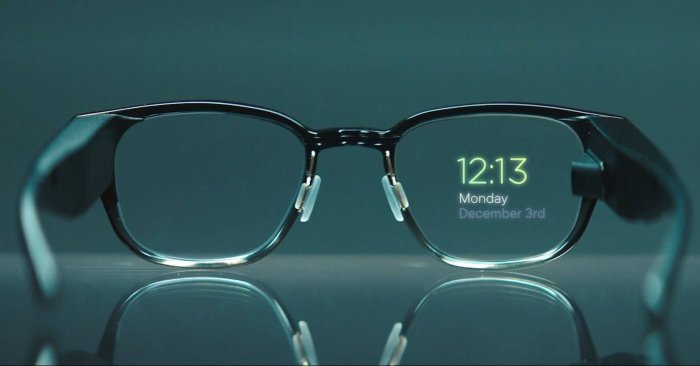
Smartphones have become ubiquitous, deeply integrated into our daily lives. Their versatility and powerful features have made them indispensable tools for communication, information access, entertainment, and productivity. To understand the potential impact of smart glasses on smartphones, we need to delve into the core functionalities and user habits that make smartphones so prevalent.
It’s hard to say if smart glasses will completely replace smartphones, but they definitely have the potential to change how we interact with technology. As we move towards a more interconnected world, seamless collaboration becomes essential. This is where cloud project management software like cloud project management software plays a crucial role.
Imagine accessing and managing projects directly through your smart glasses, streamlining workflows and enhancing productivity. While the future of smart glasses is uncertain, the increasing reliance on cloud-based solutions for work and personal life suggests that the lines between our digital and physical worlds will continue to blur.
Smartphone Functionality and Features
Smartphones are multi-functional devices that offer a vast array of features and capabilities. These features cater to diverse user needs and preferences, making them indispensable for various aspects of modern life.
- Communication:Smartphones have revolutionized communication, offering various options like voice calls, text messaging, video calls, and instant messaging applications. These features enable seamless communication with individuals and groups, regardless of geographical location.
- Information Access:Smartphones provide access to a vast repository of information through web browsers, search engines, and various applications. Users can access news, weather updates, maps, and countless other resources instantly.
- Entertainment:Smartphones are entertainment hubs, offering a wide range of options like music streaming, video playback, gaming, and social media platforms. Users can access and enjoy their favorite content anytime and anywhere.
- Productivity:Smartphones facilitate productivity with features like calendar management, note-taking applications, email clients, and document editing tools. These features enable users to stay organized, manage tasks, and work efficiently on the go.
- Photography and Videography:Smartphones have become powerful tools for capturing memories and experiences. High-resolution cameras and advanced editing features allow users to create professional-quality photos and videos.
- Location Services:GPS and location-based services enable users to navigate, track their location, and access location-specific information. These features are vital for navigation, finding nearby businesses, and sharing location details with others.
- Mobile Payments:Smartphones facilitate secure and convenient mobile payments through applications like Apple Pay, Google Pay, and Samsung Pay. These features allow users to make purchases and transactions without carrying physical cash or cards.
- Health and Fitness:Smartphones offer various health and fitness tracking features, including step counters, heart rate monitors, sleep trackers, and fitness applications. These features encourage users to monitor their health and engage in physical activity.
Smartphone User Habits
Understanding user habits is crucial for predicting the potential impact of smart glasses on smartphones. Smartphone users have developed specific patterns and preferences that influence their interactions with these devices.
- Frequent Use:Smartphones are constantly in use, with users checking their devices multiple times a day for notifications, emails, messages, and social media updates. This frequent usage reflects the device’s integration into daily routines.
- Multitasking:Users often engage in multitasking, using multiple applications simultaneously. This behavior highlights the smartphone’s ability to handle diverse tasks efficiently.
- Personalization:Users customize their smartphones with personalized settings, themes, and applications to create a unique and tailored experience. This customization reflects the individual preferences and needs of each user.
- Social Connectivity:Smartphones are essential tools for social interaction, facilitating communication and connection with friends, family, and colleagues. Social media platforms, messaging applications, and video calls play a significant role in this social connectivity.
- Information Consumption:Users rely on smartphones for accessing information, news, and entertainment content. This behavior underscores the smartphone’s role as a primary source of information and entertainment.
- App Dependence:Users rely heavily on applications for various tasks and activities, from communication and navigation to productivity and entertainment. The vast ecosystem of mobile applications provides users with diverse functionalities and services.
Potential Advantages of Smart Glasses: Will Smart Glasses Replace Smartphones
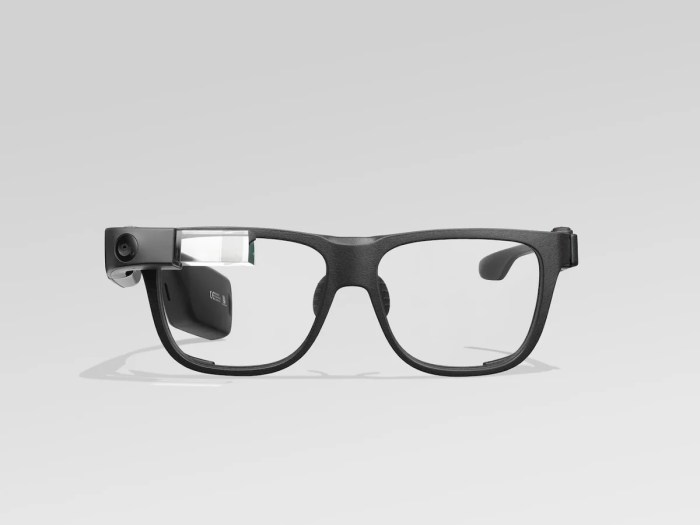
Smart glasses, with their ability to overlay digital information onto the real world, offer a compelling alternative to smartphones. While still in their early stages of development, smart glasses hold the potential to revolutionize how we interact with technology and information.
Here are some of the key advantages they offer:
Enhanced User Experience and Efficiency
Smart glasses can significantly enhance user experience and efficiency by seamlessly integrating digital information into the real world. This hands-free approach allows users to stay focused on their surroundings while accessing information, making tasks more efficient and less disruptive.
- Seamless Multitasking:Imagine checking your emails, navigating directions, or receiving notifications without ever taking your phone out of your pocket. Smart glasses allow you to multitask seamlessly, keeping your hands free and your attention on the task at hand.
- Contextual Information:Smart glasses can provide context-aware information, delivering relevant data based on your location, activity, and even your emotional state. For example, while exploring a museum, smart glasses could provide historical information about exhibits as you approach them, enriching the experience and enhancing your understanding.
- Improved Accessibility:Smart glasses can be a valuable tool for people with disabilities, providing visual aids, text-to-speech features, and other assistive technologies that can improve their daily lives.
Applications Across Industries
The potential applications of smart glasses extend far beyond consumer use, with significant implications for various industries and fields.
- Healthcare:Smart glasses can assist healthcare professionals in diagnosing and treating patients, providing real-time access to medical records, vital signs, and diagnostic imaging. They can also guide surgeons during complex procedures, enhancing accuracy and minimizing errors.
- Manufacturing:Smart glasses can improve efficiency and safety in manufacturing settings by providing workers with hands-free access to assembly instructions, real-time data on equipment performance, and alerts for potential hazards.
- Education:Smart glasses can transform the learning experience by providing students with interactive and immersive content, real-time translations, and personalized instruction tailored to their individual needs.
- Retail:Smart glasses can enhance the shopping experience by providing shoppers with product information, personalized recommendations, and virtual try-ons, leading to increased customer satisfaction and sales.
Technological Advancements and Future Predictions
The realm of smart glasses is rapidly evolving, driven by ongoing advancements in technology. These innovations promise to reshape the way we interact with the world and transform smart glasses from niche devices into ubiquitous tools.
Advancements in Display Technology
The visual experience of smart glasses is paramount, and significant strides are being made in display technology to enhance clarity, brightness, and field of view.
- Micro-LED Displays: These displays offer superior brightness, contrast, and energy efficiency compared to conventional LCD or OLED displays. Micro-LED technology allows for smaller, more compact displays with higher pixel densities, resulting in sharper and more immersive visuals.
- Waveguide Displays: Waveguide displays utilize light-guiding principles to project images onto the user’s retina, creating a more natural and comfortable viewing experience. These displays are known for their compact size and wide field of view, enabling a more seamless integration with the user’s surroundings.
It’s exciting to think about a future where smart glasses replace smartphones, but the technology still has a long way to go. One area that needs improvement is processing power, and Apple might be taking a big leap forward with their rumored iPhone 18 chip.
News of a potential announcement about the iPhone 18 chip, featuring advanced 16nm fabrication by TSMC, has sparked excitement as reported by Snapost. This kind of innovation could be a major step toward making smart glasses a viable alternative to smartphones.
- Augmented Reality (AR) Displays: AR displays overlay digital information onto the real world, enriching the user’s perception of their environment. Advancements in AR displays are focused on improving the accuracy and realism of virtual objects, allowing for more immersive and interactive experiences.
Emerging Technologies for Enhanced Functionality
Beyond display technology, other emerging technologies are poised to revolutionize the capabilities of smart glasses.
- Artificial Intelligence (AI): AI algorithms can be integrated into smart glasses to provide personalized experiences, such as voice assistants, gesture recognition, and real-time translation. AI can also enhance the functionality of AR features, making virtual objects more responsive and interactive.
- Biometric Sensors: Smart glasses equipped with biometric sensors can monitor physiological data like heart rate, blood pressure, and even eye movements. This information can be used to improve user health, track fitness progress, and even control the functionality of the glasses.
The question of whether smart glasses will replace smartphones is a hot topic, and while it might seem far-fetched, it’s worth considering the impact of emerging technologies on how we work. Gartner’s trends, which you can read about in detail here , are a good indicator of what’s coming down the pipeline.
If we see a future where augmented reality becomes more integrated into our daily lives, it’s certainly possible that smart glasses could become a primary device, potentially displacing smartphones.
- 5G Connectivity: The advent of 5G networks promises faster and more reliable data transfer speeds, enabling seamless streaming of high-resolution content and real-time interaction with cloud-based services. 5G connectivity will be crucial for unlocking the full potential of AR and AI applications on smart glasses.
Hypothetical Scenario: A Future Where Smart Glasses Replace Smartphones
Imagine a future where smart glasses have become the primary computing device, effectively replacing smartphones.
- Seamless Communication: Smart glasses with advanced voice recognition and AI capabilities would allow for hands-free communication, eliminating the need to hold a phone. Users could make calls, send messages, and even participate in video conferences without ever taking their glasses off.
- Augmented Reality Navigation: Smart glasses could provide real-time navigation, overlaying directions onto the user’s view of the world. This would make it easier to navigate unfamiliar environments and find specific locations, without needing to consult a map or phone.
- Personalized Information Access: Smart glasses could act as personalized information hubs, providing users with relevant data based on their location, interests, and needs. This could include weather updates, traffic information, restaurant recommendations, and even reminders for appointments.
Social and Ethical Implications
The widespread adoption of smart glasses presents a plethora of social and ethical implications, raising concerns about privacy, security, and the very nature of social interactions. As these devices become more integrated into our lives, it’s crucial to carefully consider the potential consequences and address them proactively.
Privacy Concerns
The constant recording and data collection capabilities of smart glasses pose a significant privacy risk. They could potentially capture and transmit sensitive information without the user’s knowledge or consent, such as private conversations, personal data, and even biometric information. This raises concerns about unauthorized surveillance, data breaches, and the potential misuse of personal information by both individuals and corporations.
For example, a recent study by the Electronic Privacy Information Center (EPIC) found that some smart glasses models contain facial recognition capabilities that could be used for mass surveillance without proper safeguards.
Security Risks, Will smart glasses replace smartphones
Smart glasses, like any connected device, are vulnerable to security breaches. Hackers could potentially gain access to the device’s camera, microphone, and data storage, enabling them to spy on users, steal personal information, or even control the device remotely. This vulnerability could have serious consequences for individuals and organizations, particularly those involved in sensitive activities or handling confidential information.
For instance, a recent case involving a major tech company revealed that their smart glasses were compromised, allowing hackers to access sensitive data and corporate communications.
Impact on Social Interactions
The pervasive use of smart glasses could significantly alter the dynamics of social interactions. Constant recording and data collection could create an environment of mistrust and anxiety, as people become wary of being monitored or recorded without their consent. The potential for distractions and interruptions during social interactions could also lead to a decline in face-to-face communication and a more isolated social experience.
For instance, imagine a scenario where individuals are constantly checking their smart glasses for notifications or engaging in virtual reality experiences during social gatherings, neglecting real-world interactions.
Benefits and Drawbacks
The following table compares the potential benefits and drawbacks of smart glasses replacing smartphones:
| Benefits | Drawbacks |
|---|---|
| Enhanced accessibility and convenience | Privacy concerns and data collection |
| Improved user experience and efficiency | Security risks and vulnerabilities |
| Augmented reality capabilities and immersive experiences | Potential for social isolation and distraction |
| Integration with other smart devices and services | Ethical considerations and potential misuse |
Market Trends and Industry Outlook

The smart glasses market is experiencing rapid growth, driven by advancements in technology and increasing consumer demand. While still in its nascent stage, the industry is attracting significant investments and witnessing the emergence of new players and innovative products.
Market Trends and Projections
The global smart glasses market is expected to witness substantial growth in the coming years. According to a report by MarketsandMarkets, the market size is projected to reach USD 23.7 billion by 2028, growing at a CAGR of 22.4% during the forecast period.
This growth can be attributed to several factors, including:
- Increasing adoption of augmented reality (AR) and virtual reality (VR) technologies in various industries.
- Rising demand for hands-free devices and wearable technologies.
- Growing popularity of smart glasses for entertainment, gaming, and social media applications.
- Advancements in battery life, display quality, and processing power of smart glasses.
Key Players and Strategies
Several prominent companies are actively involved in the smart glasses market, each with its unique strategy and focus:
- Google:Google is a major player in the smart glasses market with its Google Glass Enterprise Edition. Google’s strategy focuses on providing enterprise-grade solutions for industries such as healthcare, manufacturing, and logistics.
- Microsoft:Microsoft is another key player in the market with its HoloLens 2, a mixed reality headset designed for enterprise applications. Microsoft’s strategy emphasizes the development of immersive experiences and collaboration tools.
- Apple:While Apple has yet to release a dedicated smart glasses product, rumors suggest the company is actively working on a device. Apple’s strategy is likely to focus on integrating its existing ecosystem of devices and services into a seamless smart glasses experience.
- Facebook (Meta):Meta has invested heavily in augmented reality and virtual reality technologies. The company’s strategy involves developing AR glasses that can enhance social interactions and provide immersive experiences.
Factors Influencing Future Growth
Several factors will play a crucial role in shaping the future of the smart glasses industry:
- Technological Advancements:Continued advancements in battery life, display technology, and processing power will be essential for enhancing the user experience and driving adoption.
- Cost Reduction:Reducing the cost of manufacturing smart glasses will make them more accessible to a wider range of consumers.
- Regulatory Landscape:The development of clear regulatory frameworks for data privacy and security will be crucial for building consumer trust and fostering innovation.
- Content Ecosystem:The availability of compelling content and applications specifically designed for smart glasses will be vital for attracting and retaining users.


